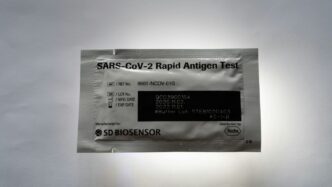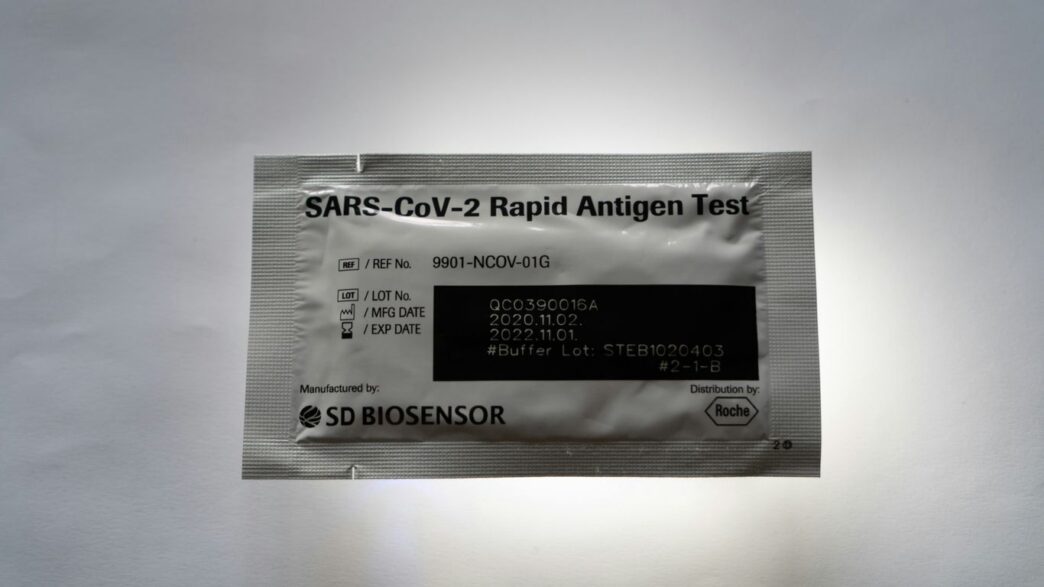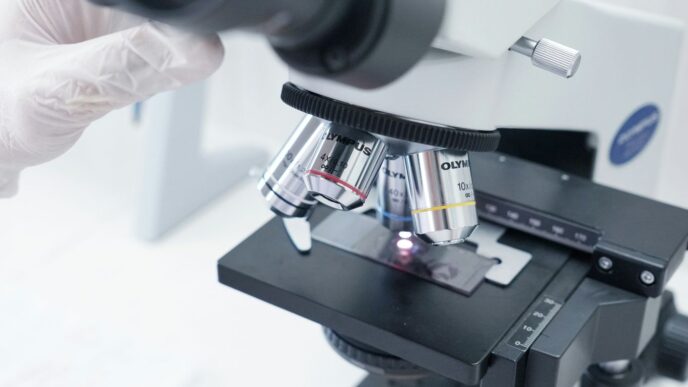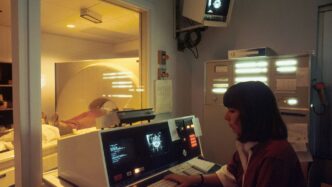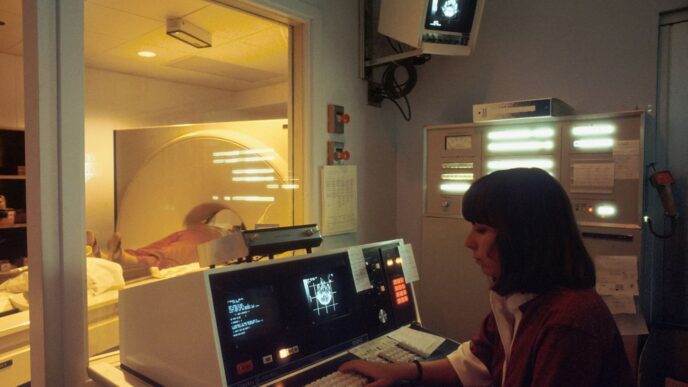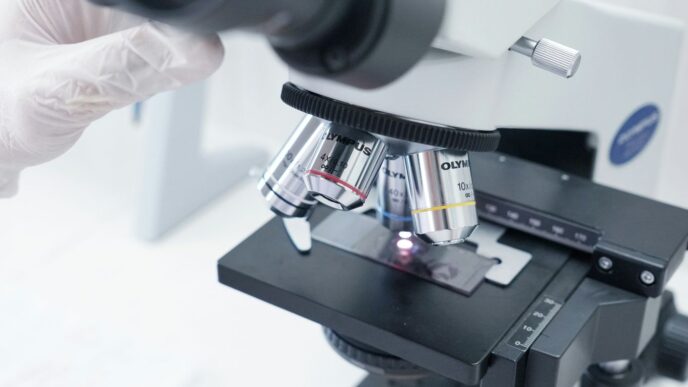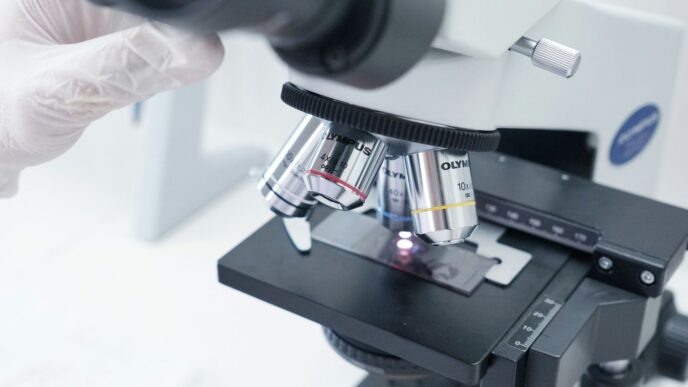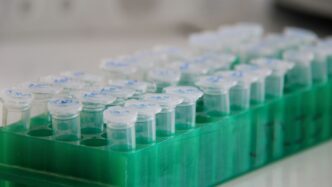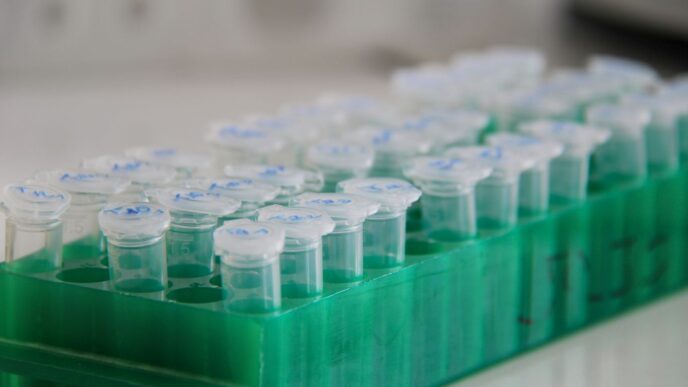Hospitals in 2025 are looking a lot different, but not because of fancy robots or new machines. The real change is coming from something much smaller: RFID technology in healthcare. These tiny tags and scanners are making it way easier to keep track of patients, equipment, and supplies. Nurses and doctors aren’t wasting time searching for missing tools or double-checking patient info. Instead, RFID is helping everyone stay organized, cut down on mistakes, and make sure patients get the care they need, right when they need it. It’s not flashy, but it’s changing the way hospitals work from the inside out.
Key Takeaways
- RFID technology in healthcare is making patient identification safer and more reliable, reducing mix-ups and errors.
- Hospitals can now find important medical equipment fast, so staff spend less time searching and more time helping patients.
- Inventory and supply chains are easier to manage with RFID, cutting down on wasted supplies and making sure nothing runs out unexpectedly.
- Patient flow in hospitals is smoother, with less waiting around and better use of staff time, thanks to real-time tracking and data.
- RFID also helps with infection control by automatically tracking hand hygiene, instrument sterilization, and contact tracing during outbreaks.
Enhancing Patient Identification and Safety With RFID Technology in Healthcare

RFID technology is reshaping how hospitals handle safety and identification, leading to smoother operations and fewer mistakes. It isn’t just about keeping track of supplies and gear (though that’s part of it). When it comes to patients, RFID is creating layers of protection we didn’t have just a few years ago.
Reducing Medical Errors Through Accurate Wristband Tagging
One of the most noticeable changes with RFID has been in patient wristbands. These aren’t just plastic bracelets with a barcode; they carry embedded RFID chips that store everything from the patient’s name and allergies to surgical history. If a nurse scans a band and the medication doesn’t match the patient’s file, the system flags it right away. Here’s where RFID tends to help most:
- Scanning the wristband instantly pulls up the correct patient profile, cutting down on wrong-patient errors.
- Staff are automatically alerted to mismatches between patient identity and prescribed treatments.
- Historical data is available at a tap – no hunting through folders or records.
This kind of automated check can seem basic, but it drastically cuts down on mix-ups, especially during busy shifts or in emergencies. See how RFID can also support medical equipment tracking for more context.
Improving Medication Administration and Tracking
Medication errors have been a huge problem in hospitals for decades. With RFID tagging, every medication bottle, IV bag, or pill packet can be scanned and matched to the patient who should receive it. Nurses don’t have to manually cross-check everything; the tech does that heavy lifting. A few big wins:
- The system notifies staff about potential dosage errors before they happen.
- Medication histories update in real time—no double dosing by accident.
- It’s easier to audit and review events if something unusual does happen.
| Area Impacted | Manual Process Error Rate | RFID-Assisted Error Rate |
|---|---|---|
| Patient medication ID | 3.5% | 0.2% |
| Patient mismatches | 1.8% | 0.1% |
Facilitating Rapid Emergency Response With Real-Time Data
When seconds count, RFID makes a real difference. In emergency departments, patients arrive fast and sometimes can’t communicate. If they’re already in the system, their wristband instantly gives staff every detail they need. Even new admissions get tagged right away, so:
- Medical history and allergies are accessed immediately, saving critical time.
- Staff track where every patient is located in real time, minimizing delay when urgent intervention is needed.
- During major incidents, RFID helps coordinate care for multiple arrivals at once by instantly sorting their needs.
RFID isn’t the whole answer to safer healthcare—but it’s already making patient identification and medication handling way more reliable, helping nurses and doctors focus on actual care instead of paperwork or second-guessing.
Revolutionizing Hospital Asset and Equipment Management Using RFID Technology in Healthcare
RFID tech is seriously changing the way hospitals keep tabs on their assets. A lot of hospital equipment gets moved around—think about how busy every wing is, all day. Knowing where important things like infusion pumps or portable x-ray machines are isn’t just about saving a few minutes. It can literally change outcomes for patients.
Locating Critical Medical Equipment Instantly
RFID tags make it possible for staff to see, on a screen, where any tagged device is located—no more running around searching during emergencies. This is huge. With real-time tracking, a nurse can check an app or a central monitor and spot exactly where the nearest defibrillator or scanner is, right down to the room number. No more running between floors, which used to add up to hours of wasted time every week.
List of what RFID tracking solves:
- No more manually checking inventory rooms for vital equipment
- Quicker emergency response because staff know where devices are
- Less time wasted on searching, more time with patients
Preventing Loss and Theft of Valuable Assets
Medical devices cost a lot, and misplacing even a few items hurts any hospital’s budget. RFID helps cut back on both accidental losses and theft. When RFID systems are set up with alerts, staff get notified if something leaves its assigned area or goes out the hospital door. It’s a lot easier to spot patterns of unusual movement.
Here’s a quick breakdown of RFID’s impact:
| Scenario | Before RFID | With RFID |
|---|---|---|
| Lost equipment | Happens regularly | Rare, real-time alerts help |
| Theft detection | Slow, almost impossible | Quick, triggered by zone exit |
| Replacement cost | High | Often reduced |
For a closer look at how this works in clinical settings, check out RFID technology in healthcare improves patient safety.
Optimizing Equipment Utilization and Maintenance Schedules
RFID systems don’t just find equipment—they also log how and when it’s used. Over time, the data shows which devices are actually being used a lot, which ones just sit around, and which need more frequent servicing.
Three ways this helps hospitals:
- Predict when equipment will need maintenance based on real use, not just a calendar.
- Move underused equipment to busy departments, so nothing gathers dust.
- Avoid overstocking – buy or rent less, because usage trends are tracked and predictable.
Bottom line, RFID tech in asset management is making it much simpler to keep track of tools, cut down on waste, and keep everything running smoother. Even five years ago, this stuff felt futuristic. Now, it’s just how hospitals get things done.
Streamlining Hospital Inventory and Supply Chain With RFID Solutions

Hospitals in 2025 are constantly juggling thousands of supplies, from bandages to high-dollar medication and even surgical tools. RFID technology is changing the way hospitals manage inventory and track supplies, making life easier for clinical staff and supply managers. Below, I’ll cover how RFID systems are being used to cut down on waste, automate tracking, and bring real transparency to the supply chain.
Automating Inventory Tracking and Reporting
One of the big hassles for hospitals used to be manual inventory counting. With RFID, every item is tagged. As items move in and out of stockrooms or operating theaters, the system automatically logs each change. This means:
- Real-time visibility of which items are on hand, and where they’re stored
- Less time spent on physical inventory counts
- Fast notifications for low or out-of-stock supplies
Here’s a quick look at how RFID compares to older methods:
| Method | Accuracy | Staff Time Required | Update Speed |
|---|---|---|---|
| Manual Counting | Medium | High | Slow |
| Barcodes | High | Medium | Moderate |
| RFID | Very High | Low | Instant |
Minimizing Waste by Monitoring Expiration Dates
Expired supplies aren’t just a waste of money—they’re a safety risk for patients. With RFID, each item carries its own use-by date, and the system tracks them automatically. Here’s how hospitals are using RFID to keep waste down:
- Receive automatic alerts when items are getting close to expiration
- Rotate and use supplies before they expire, reducing costly write-offs
- Remove expired materials before they get near any patient
This has been especially helpful for high-value medications and perishable items, which add up fast if wasted.
Enhancing Supply Chain Transparency From Supplier to Patient
RFID doesn’t just track items after they get to the hospital. Many hospitals now work with suppliers to tag goods before they ever leave the warehouse. This allows:
- Tracking shipments in real time as they travel from supplier to hospital
- Verifying the correct items arrive, undamaged and on-time
- Following items all the way to their point of use with a patient
Supply chain transparency is more than a buzzword—it’s one way to make sure patient care doesn’t get interrupted and budgets aren’t blown on lost supplies.
Hospitals that have made the switch to RFID aren’t looking back. Less waste. Fewer shortages. No more hours lost to manual checks. And that can make a world of difference for staff and patients alike.
Transforming Patient Flow and Hospital Operations Through RFID Technology in Healthcare
Hospitals these days are busy, packed places where every second matters. Getting patients in, taken care of, and out without unnecessary waiting is tough. That’s where RFID comes in—it’s not some wild sci-fi thing, but it’s changing how hospitals run, sometimes in ways most people don’t even notice. Let’s dig into how this technology is shaking things up, from admissions to that last walk out the door.
Optimizing Admission and Discharge Processes
No one likes to sit in a waiting room, least of all when sick. Staff spend a good chunk of their day looking for paperwork, tracking down records, or just figuring out who’s where, and why. With RFID, every patient gets a tag or wristband that instantly updates their location and status in the system. This means admissions staff know the moment a patient arrives or leaves, and can move things along faster.
Some quick specifics where RFID makes an impact:
- Electronic wristbands make check-in automatic. As soon as a patient enters, the system registers them without the usual fuss.
- Discharge is quicker, since staff can see instantly if the patient has finished all necessary steps (imaging, pharmacy, etc.).
- Lost charts or misplaced files? Far less common, since RFID logs everything in real time.
Reducing Patient Wait Times and Administrative Bottlenecks
Nobody wants longer waits, whether it’s for surgery or blood tests. Real-time tracking helps staff see patient progress through each stage. Let’s say labs are backed up; RFID shows exactly where the slowdown is, so help gets sent where it’s needed most.
Here’s how RFID tackles the bottlenecks:
- Flags up delays to clinical teams, so no one sits forgotten in a hallway.
- Sends alerts if patients have been in one spot too long, nudging staff to check in.
- Updates parents or carers on patient status without anyone having to make a dozen phone calls.
A quick look at how wait times improve:
| Stage | Avg. Wait Without RFID | Avg. Wait With RFID |
|---|---|---|
| Check-In | 15 minutes | 4 minutes |
| Lab Results | 28 minutes | 11 minutes |
| Discharge | 35 minutes | 12 minutes |
These are real differences. It means more patients seen, and fewer getting frustrated and leaving without treatment. For a broader look at data-driven solutions, wearable devices like real-time monitoring sensors also contribute to increased hospital efficiency.
Supporting Real-Time Data Collection for Efficient Workflow
Back in the day, staff would jot things on clipboards, then someone else had to type it in. Easy for errors or delays to sneak up without anyone noticing. Now, RFID collects patient movement and treatment steps live, so managers can see exactly what’s happening.
- Data is updated instantly as patients, samples, or equipment move.
- Management can spot patterns—maybe X-ray is a regular snag, or maybe equipment runs out at the same time every Monday.
- Long-term, those patterns help hospitals plan better, schedule staff more efficiently, and keep things running smoothly.
Key benefits realized from RFID-backed workflows:
- Patients spend less time lost in the system.
- Staff headaches drop from fewer urgent searches or misplaced items.
- Hospitals see real-time stats, so tweaks and improvements can happen on the fly.
That’s the gist: RFID isn’t just a handy upgrade; for hospitals wanting to keep up (or even stay ahead), it’s fast becoming part of daily life.
Strengthening Infection Control and Compliance via RFID in Healthcare Settings
One thing that keeps hospital workers awake at night is infection control. In 2025, RFID is front and center in how hospitals are fighting germs, keeping patients safer, and helping staff stay on track with hygiene rules. RFID tech is now a watchdog for infection control—quietly, automatically checking if people and tools are where they’re supposed to be and doing what they’re supposed to do.
Monitoring Hand Hygiene Compliance Automatically
Everyone knows hand hygiene is important, but tracking it is a pain. With RFID, hospitals don’t have to rely on someone standing around with a clipboard. Instead, RFID badges can log when a staff member uses a hand sanitizer station, and even which entry point was used. Here’s how it’s changing things:
- Badges worn by staff automatically record each visit to a sanitizer or sink.
- Alerts pop up if someone misses a cleaning as they enter a patient room.
- Data dashboards show managers which shifts or departments are slipping up on hygiene.
Sample Table: Monthly Hand Hygiene Compliance Rates (2025)
| Department | Pre-RFID (%) | Post-RFID (%) |
|---|---|---|
| Emergency | 71 | 93 |
| Pediatrics | 75 | 97 |
| Intensive Care | 80 | 98 |
Numbers above are average rates based on RFID tracking data from 5 regional hospitals.
Tracking Sterilization and Instrument Usage
Hospitals go through a pile of surgical instruments and tools every day. Tracking which ones have been cleaned or are ready for use is tough if you’re just using paperwork. RFID tags make it possible to automatically log when a tool is sterilized, taken out of storage, or used in surgery—and make sure nothing slips through the cracks.
Some concrete benefits:
- Sterilization cycles are tracked in real time, so staff always know if a tool is safe to use.
- If an instrument misses a cleaning step, the system flags it before it gets near a patient.
- Automated records make audits and compliance checks a breeze.
Enabling Swift Contact Tracing During Outbreaks
Outbreaks are basically every hospital’s nightmare. When infection hits, knowing where staff and patients have been, and what equipment’s been used, can help stop the spread fast. RFID makes tracing contacts possible in minutes instead of days.
How it works in real life:
- The system logs who interacted with a patient or moved through a certain area.
- When a case is detected, you can instantly see who else may be at risk.
- Notifications go out automatically, so the right people get tested or isolated—fast.
Thanks to RFID, infection control in hospitals is a whole new ball game. No more guesswork, lost paperwork, or delayed responses—just accurate, real-time information that helps keep everyone safer.
Empowering Data-Driven Decision Making With RFID Technology in Healthcare
RFID technology is turning out to be a real driver for smarter decision making in hospitals this year. Instead of relying on rough estimates or slow manual logs, hospitals are now getting real-time, hard data from thousands of tagged devices, supplies, and even patients—basically everywhere RFID is in use. The difference is night and day: what used to take hours of paperwork and guesswork now happens automatically, letting staff and managers see what’s really happening as it happens.
Analyzing Operational Performance in Real Time
With RFID tags continuously feeding location, usage, and supply data into analytics software, hospitals don’t have to wait for end-of-shift reports or paper logs. For example, if a hospital wants to know how often infusion pumps are actually being used in the ICU, they just pull up the dashboard and check, right now. Here’s a quick example of what that kind of data might look like:
| Asset Type | In Use (%) | Available (%) | Under Maintenance (%) |
|---|---|---|---|
| IV Pumps | 65 | 30 | 5 |
| Defibrillators | 80 | 15 | 5 |
| Portable X-rays | 50 | 40 | 10 |
That table lets staff make decisions about moving equipment, calling for repairs, or even deciding if more devices are needed. The information is immediate.
Identifying Process Bottlenecks and Areas for Improvement
It’s not just about equipment. Hospitals use RFID today to spot slowdowns that affect patients, like delayed admissions or wait time spikes. With tagged wristbands and tracked movement, systems can:
- Flag when patients are waiting too long in a particular department.
- Show if a supply closet always runs empty at the busiest times.
- Pinpoint exactly where paperwork or digital check-ins lag during busy hours.
This targeted information helps teams fix what’s broken, instead of just guessing.
Improving Resource Allocation With Predictive Insights
Having a steady flood of up-to-date stats allows hospitals to plan better for the next patient surge or supply shortage. Now, predictive models—fed by RFID-based data—help
- Anticipate likely patient influx from local events or seasonal trends.
- Schedule cleaning staff based on real-time, rather than fixed, schedules.
- Alert staff about impending shortages before they become a problem.
This isn’t just a dream. It’s already popping up in places combining RFID with other wearable technology solutions, which offer even deeper tracking and forecasting. Day-to-day, that means fewer surprises, less scrambling, and more confident planning.
In short, RFID in healthcare is shifting decision making from slow, reactive, and paper-based to quick, predictive, and data-driven. And for hospitals, that can mean smoother operations.
Overcoming Implementation Challenges of RFID Technology in Healthcare
Getting RFID systems up and running in a hospital is rarely smooth sailing. There’s a lot more to it than just attaching tags to equipment and expecting immediate results. From technical hiccups to old habits that die hard, each step brings something new to figure out. Let’s break down some of the big challenges and how hospitals are handling them in 2025.
Addressing Staff Training and Change Management
Adopting RFID isn’t just a tech project—it’s a people project too. Staff need to learn new workflows, and that takes effort and patience.
- Start with open communication: explain not just how RFID works, but why it matters.
- Offer hands-on training: many people learn better by doing, not reading manuals.
- Be ready for questions and resistance. Expect some pushback, especially from folks who’ve done things a certain way for years.
Hospitals taking a step-by-step approach see fewer mistakes and more buy-in. Staff who feel part of the process tend to adjust faster and actually help iron out kinks in the system.
Maintaining Patient Privacy and Data Security
Whenever you add more data to a hospital’s network, keeping it safe becomes even more important. Hospitals need to:
- Use encryption for sensitive RFID data.
- Limit who can access and change RFID records.
- Make sure systems update to fix new security issues.
In 2025, rules around privacy are even stricter, so new tech needs regular audits. It’s easy for things to slip through the cracks, so regular spot-checks and clear policies keep both staff and patients protected.
Balancing Technological Efficiency With Compassionate Care
There’s an art to blending technology with the human side of healthcare. Some patients get nervous about new tracking systems, and some staff worry about losing the personal touch. Hospitals focus on:
- Training staff not just on the tech, but on how to talk about it with patients
- Making sure the technology works in the background, so daily interactions aren’t interrupted
- Gathering patient feedback and tweaking how RFID is used, if needed
A well-implemented system feels invisible: it doesn’t get in the way, but it does open doors for safer care and smoother operations.
Common Technical Roadblocks
Technical issues come with the territory. Some of the most common headaches include interference between devices, tags that don’t read well, and compatibility problems between old and new systems. Hospitals are learning to smooth out these hiccups by:
- Running pilot tests before a full rollout
- Partnering with experienced RFID solution providers
- Choosing equipment that works well together, as described on RFID implementation faces technical challenges such as interference issues, limited read range, compatibility concerns between tags and readers, and data collision problems (RFID interference and compatibility)
A Snapshot: Top Challenges and Fixes
| Challenge | Solution Example |
|---|---|
| Staff resistance | Early involvement + ongoing support |
| Privacy concerns | Strict access controls + routine audits |
| Technical compatibility | Vendor collaboration + staged deployment |
| Operational interruptions | Gradual rollout + continuous feedback from staff |
The reality is, rolling out RFID in healthcare isn’t a quick project—it’s an ongoing journey. But with clear priorities and teamwork, hospitals can turn early headaches into much smoother days ahead.
Conclusion
So, looking at everything, it’s clear that RFID isn’t just another tech buzzword in healthcare. It’s actually making a difference in how hospitals run and how patients are cared for. From tracking equipment so nurses don’t have to waste time searching, to making sure the right meds go to the right people, RFID is helping things run smoother. Sure, there are some bumps in the road—like getting everyone on board and making sure the tech works with older systems—but the benefits are hard to ignore. As hospitals keep looking for ways to do more with less, RFID seems like it’s here to stay. Who knows, maybe in a few years, we’ll wonder how hospitals ever managed without it.
Frequently Asked Questions
What is RFID and how is it used in hospitals?
RFID stands for Radio Frequency Identification. In hospitals, it is used to track patients, staff, and equipment. RFID helps doctors and nurses quickly find what they need, keeps track of medicine, and improves patient safety by making sure the right care is given to the right person.
How does RFID help prevent medical mistakes?
RFID wristbands and tags store important patient information. When nurses scan these tags, they can double-check a patient’s identity and make sure they are giving the correct medicine or treatment, lowering the chance of mistakes.
Can RFID help hospitals find lost equipment?
Yes. With RFID tags attached to equipment, hospital staff can easily locate missing items using special readers. This saves time, prevents loss, and makes sure important tools are always available when needed.
Does RFID help with infection control in hospitals?
Absolutely. RFID can track when staff use hand sanitizers and if equipment has been cleaned. It also helps trace who came into contact with whom, which is very helpful during outbreaks to stop the spread of germs.
Are there any challenges to using RFID in healthcare?
Some challenges include training staff to use the technology, making sure patient data stays private, and balancing the use of technology with caring for people. Hospitals must work hard to keep information safe and make sure everyone is comfortable with the new systems.
What does the future look like for RFID in healthcare?
RFID is expected to become even more common in hospitals. It may be used with other new technologies, like artificial intelligence, to make hospitals even smarter. This will help doctors and nurses work faster and safer, and could even help care for people at home.

